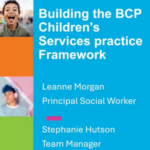
By Liam Barrell
There is no one-size-fits-all approach to CV writing and hiring in children’s social work.
Managers will have slightly different views on what is best, while CVs for the locum market may need to differ slightly from those for the permanent market.
But there are a few basics that, if you get them right, will ensure your CV should be effective and serve its purpose well.
An example CV
Alongside this guide, Liam has produced a CV template to provide practitioners with an example to draw upon.
To download this, go to the careers section of The Social Work Community, our online community for practitioners.
If you work in adults’ services, you can find advice, and access to an example CV, in this companion article.
Header
- Include your social work registration number; it can be reassuring for hiring managers to see it.
- If you are used to working in the locum market and are applying for a permanent role, make sure you add contact details to your CV (agencies will always remove contact details).
- You do not need to list your full address; an area with the first half of your postcode is sufficient to let employers know where you live.
Professional summary
- This section is for selling yourself – make it short, sharp and relevant.
- A brief introductory sentence is professional and should introduce your key information.
- Buzzwords – eg ‘team player’, ‘works on own initiative’, ‘hardworking’, ‘reliable’ – are not needed.
- Make your level of post-qualified experience clear and mention the teams/services you have worked in so far, especially if it is relevant to the job you want. If you’re applying for a multi-agency safeguarding hub role and have MASH experience, make this visible!
- List a few key points covering your experience, for example: having worked in areas of the UK with a similar demographic to where you’re applying to; experience of court work; experience of holding high, complex caseloads; any specialist experience (eg edge of care, domestic violence, working with children with disabilities).
- If you are looking to work outside of major cities and have a driving licence, mention this.
- Any key social work qualifications can be listed in this section.
Work history
- Your work history should clearly show job title, dates and organisations.
- Try to use commonly-used language or acronyms to describe teams where possible, eg MASH, assessment, safeguarding, looked-after children, children with disabilities.
- Descriptions under each job should contain significant detail for at least one job in each service/team you’ve worked with. Detail is important as employers may combine a CV with a supporting statement when shortlisting. Always include relevant detail under any jobs similar to those you’re applying for or keen to work in.
- You do not want a four or five-page CV, so if you’ve had a large of number of social work jobs you should list the detail for three or four of them, then leave the others brief.
- Employment gaps should be addressed with an explanation – unexplained gaps can put hiring managers off shortlisting a candidate, especially in the locum market.
- If you are releasing your CV on job boards or to agencies, ensure key words are in the body of text. List things like legislation you have worked with, teams you have worked in and specialist experience. This makes your CV more likely to be picked up by recruiters’ key word searches and AI tools.
Education
- List your social work qualification, any subsequent qualifications and any CPD you feel is relevant to the role you are applying for.
- Unless you’re particularly proud of your results at school, they are not necessary at this point in your career.
Liam Barrell is recruitment lead for children & young people’s services at the London Borough of Newham





 Bournemouth, Christchurch and Poole
Bournemouth, Christchurch and Poole  Hampshire County Council
Hampshire County Council  Oxfordshire County Council
Oxfordshire County Council  South Gloucestershire Council
South Gloucestershire Council  Wokingham Borough Council
Wokingham Borough Council  Webinar: building a practice framework with the influence of practitioner voice
Webinar: building a practice framework with the influence of practitioner voice  ‘They don’t have to retell their story’: building long-lasting relationships with children and young people
‘They don’t have to retell their story’: building long-lasting relationships with children and young people  Podcast: returning to social work after becoming a first-time parent
Podcast: returning to social work after becoming a first-time parent  How managers are inspiring social workers to progress in their careers
How managers are inspiring social workers to progress in their careers  Workforce Insights – showcasing a selection of the sector’s top recruiters
Workforce Insights – showcasing a selection of the sector’s top recruiters 

 Facebook
Facebook X
X LinkedIn
LinkedIn Instagram
Instagram
Comments are closed.